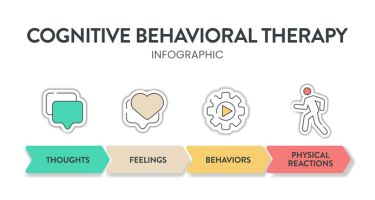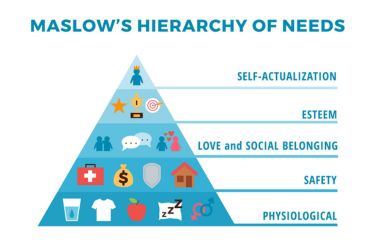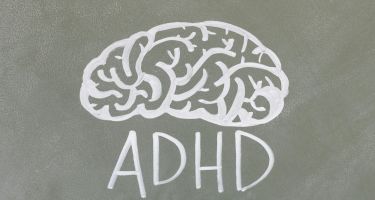Dyslexia is a common learning difference that affects how people read, write, and spell. With the right support and understanding, those with dyslexia can succeed in school and daily life. Many of us know someone who has struggled with reading or writing, and it's important to understand that help and practical strategies are available.

We often hear about dyslexia in schools, but its signs and effects aren’t always easy to spot. By learning what to look out for and how to provide the right support, we can make a real difference for children and adults alike. In this blog post, we’ll cover everything you need to know about dyslexia, from recognising the signs to finding the right help.
Key Takeaways
- Dyslexia affects reading, writing, and spelling abilities.
- Early recognition and support can help those with dyslexia thrive.
- Effective strategies and resources are available for all ages.
What Is Dyslexia?

Dyslexia is a type of learning difficulty that mostly affects our reading and spelling skills. It can show up in different ways, and some of us may have trouble with words, sounds, or remembering what we read.
Understanding Developmental and Acquired Dyslexia
Dyslexia comes in two main types: developmental and acquired.
Developmental dyslexia is present from an early age. It usually becomes clear when we start school and begin learning to read and write. The main issue is often a problem with phonological processing, which means having trouble hearing and working with the sounds in words.
Acquired dyslexia happens later in life, usually after an injury or brain illness. This type affects people who could read well before their injury, but who now struggle with reading and spelling.
According to the British Dyslexia Association, both types can impact literacy skills, but the causes and signs might be different. While developmental dyslexia is linked to genetic and brain differences, acquired dyslexia is tied to brain damage or disease.
Prevalence and Impact in Daily Life
Dyslexia is common. Experts say it affects about 1 in 10 people in the UK, though the exact number may be higher or lower due to different definitions and ways of testing.
The impact of dyslexia goes beyond just reading and spelling. Many of us might find it hard to keep up with classroom learning, follow written instructions, or remember lists. Everyday tasks, like filling out forms or reading signs, can also be difficult.
However, with the right support, such as specialist teaching or extra time for tasks, people with dyslexia can do well at school and work. We often need teaching methods that match our learning styles and give us extra time to process information.
Myths and Misconceptions
There are several myths about dyslexia that can be misleading.
One common myth is that dyslexia simply means seeing letters backwards or swapping them around. In truth, dyslexia is much more about difficulties with how we process language, especially the sounds in speech and writing.
Another myth is that only children are affected or that people with dyslexia are not intelligent. In fact, dyslexia affects people of all ages and levels of intelligence. Some of us may even have strengths in areas like problem-solving and creative thinking.
The British Dyslexia Association points out that with the right help, people with dyslexia can learn and achieve their goals like anyone else. Early identification and proper support make a major difference in confidence and learning success.
Recognising the Signs and Symptoms of Dyslexia
Symptoms in Children
When children have dyslexia, we often notice their struggles when they start learning to read and write. They might mix up letters, read slowly, or have trouble sounding out words. Spelling tends to be unpredictable, often with many mistakes in the same piece of writing.
Some children skip words or lose their place when reading books. We may also find that remembering sequences, like the alphabet or days of the week, is difficult for them.
Word recall can be slow, making it hard to find the right words in conversation. They might avoid reading aloud or show frustration during reading tasks at school.
These signs are more than just normal mistakes; they tend to happen often and cause ongoing challenges.
Symptoms in Adults
Dyslexia in adults can look different from how it appears in children. We might notice difficulties with reading at work, mixing up similar words, or needing extra time to finish written tasks. Adults may find it hard to scan text, follow instructions, or remember information read recently.
Spelling remains a challenge, and writing might feel slow or tiring. Misplacing important documents or forgetting deadlines at work are also common. Many adults with dyslexia avoid writing emails or notes in front of others, often feeling self-conscious about errors.
Reading for pleasure may be less common, and understanding complex written instructions can take longer. These difficulties usually continue from childhood and affect both professional and daily life.
Early Warning Signs
Certain signs can appear even before a child begins formal schooling. We might notice speech delays, difficulty learning nursery rhymes, or problems with rhyming words. Learning the alphabet and remembering the names and sounds of letters may take much longer than for their peers.
Below is a table with early warning signs:
| Early Warning Sign | Example |
|---|---|
| Trouble learning to speak | Delayed first words |
| Difficulty rhyming | Struggles with "cat, bat, rat" |
| Slow to learn letter names/sounds | Confusing letters like “b” and “d” |
| Poor memory for sequences | Forgetting days or numbers |
We may also notice clumsiness with directions, such as telling left from right, or confusion between similar sounding words.
Time Management and Organisation Challenges
Time management problems are common with dyslexia. We might notice frequent lateness, trouble estimating how long tasks will take, or forgetting important deadlines even with reminders. Organising schoolwork, work tasks, or personal plans can be a real struggle.
Making to-do lists may not help if we misplace them or struggle to prioritise. Key documents and important objects often get lost, and last-minute rushing becomes a pattern. Planners, alarms, and visual reminders can help, but the need for these cues sets us apart from others.
These challenges often remain from childhood into adulthood and can affect academic, social, and work life. Recognising these symptoms is key so we can support those with dyslexia more effectively.
Causes and Risk Factors
Dyslexia has several known causes and risk factors. The origin can be genetic, linked with the brain's way of processing language, or sometimes triggered by injuries or accidents.
Genetic Influences
Many people with dyslexia have a family history of the condition. Research shows that inherited genes can increase the likelihood of developing developmental dyslexia. If a parent, sibling, or grandparent has faced similar reading or learning difficulties, the risk goes up for other family members.
Genetic factors do not act alone. Our environment and experiences can affect how these genes influence reading skills. Both boys and girls can inherit dyslexia, and it is not linked to intelligence or effort.
Acquired dyslexia is less common and tends to happen after events such as a stroke, brain injury, or other neurological damage. In these cases, the person previously had normal reading skills but loses them due to the trauma. While inherited risk is the main cause, acquired dyslexia reminds us that outside events can also result in reading difficulties.
Brain Structure and Processing Differences
Brain imaging studies help us understand why reading is hard for those with dyslexia. People with this condition process language and words differently in the brain. Key areas involved in reading, such as those in the left side of the brain, may work less efficiently.
Instead of using the typical pathways, the dyslexic brain may depend on slower or less accurate systems to make sense of written words. These differences are present from early childhood and do not reflect a lack of intelligence or motivation.
Conditions such as ear infections or early language delays may also raise the risk by affecting brain development during crucial years for learning to speak and read. For acquired dyslexia, damage from a stroke or head injury can cause the brain to lose its normal ability to process written words.
Common signs in both types include trouble recognising words, confusing similar letters, or struggling to spell. These reflect real differences in how the brain handles language, not just poor teaching or low ability.
Associated Conditions and Overlapping Difficulties
Many people with dyslexia experience additional challenges that can affect learning, focus, and wellbeing. Several conditions often co-occur with dyslexia, making it essential that we understand how they relate and impact daily life.
Dyslexia and Dyspraxia
Dyspraxia, also called developmental coordination disorder (DCD), can affect movement, coordination, and motor planning. It is common for dyslexia and dyspraxia to appear together. Both conditions can make tasks such as handwriting, drawing, or tying shoelaces more difficult.
Organisation and sequencing can be affected in both dyslexia and dyspraxia. We may notice difficulties in planning routines, following steps, or remembering instructions. These challenges can impact both academic and daily activities.
Children and adults with dyslexia and dyspraxia often feel frustrated by slow progress or find schoolwork more tiring. Early support and understanding can help manage these overlapping difficulties. Simple strategies, such as using checklists or breaking tasks into smaller steps, can be effective.
Co-occurrence with ADHD
Dyslexia often overlaps with Attention Deficit Hyperactivity Disorder (ADHD). People with both conditions may struggle with focus, attention, and impulse control. Memory and organisation can be more challenging, and there may be issues with sitting still, following instructions, or completing homework.
The table below highlights some key overlapping symptoms:
| Symptom | Dyslexia | ADHD |
|---|---|---|
| Difficulty focusing | ✓ | ✓ |
| Forgetfulness | ✓ | ✓ |
| Impulsive behaviour | ✓ | |
| Problems with reading | ✓ | |
| Trouble sitting still | ✓ |
Teachers and parents might sometimes mix up the symptoms of ADHD with those of dyslexia. It is important to look carefully at each individual’s needs to help them succeed in school and at home.
Anxiety and Emotional Wellbeing
Anxiety and low emotional wellbeing are common among people with dyslexia. Struggling with reading and writing can lead to frustration, embarrassment, or worry about keeping up with classmates. These feelings can cause anxiety before tests or classroom activities.
Anxiety can also make learning harder by affecting focus and memory. Some may try to avoid situations where their difficulties are noticed. Others may become withdrawn or appear quiet in class.
We can help by building a supportive environment and encouraging confidence. Techniques such as clear routines, regular breaks, and positive feedback help lower anxiety. Addressing emotional wellbeing is just as important as supporting learning needs.
Support, Intervention, and Strategies
To help people with dyslexia, we need a mix of early diagnosis, proper educational support, and everyday self-management tools. Knowing where to get help and the methods that work gives us the best chance to improve reading, learning, and well-being.
Diagnosis and Assessment
We cannot overstate the value of early diagnosis. Identifying dyslexia as soon as possible allows children, parents, and teachers to access the right support early on. The British Dyslexia Association offers clear advice about recognising early signs and finding assessment services.
Assessment usually involves tests with a specialist, such as an educational psychologist. These tests look at things like reading accuracy, memory, and how we process sounds in words. Results guide our support plans and school strategies.
We encourage families to stay active throughout the process. Detailed assessments also help us explain any extra help needed at school or university and can inform requests for exam accommodations.
Educational Support and Tools
Targeted teaching is key for learners with dyslexia. Schools may offer specialist interventions, such as systematic phonics instruction, which help break down language into smaller, manageable sounds. In line with guidelines from groups like the British Dyslexia Association, lessons should be clear, structured, and consistent.
Classrooms benefit from assistive technology too. Tools like text-to-speech software, audiobooks, and spell-checkers remove some barriers to learning. Timetables and organisational tools can also support time management, helping children keep track of tasks and deadlines.
We work closely with school staff to make sure teaching methods are adapted for each child. Adjustments such as extra time in exams, using coloured overlays, or providing accessible resources are often useful.
Self-Management Techniques
We also need to help children develop their own coping skills, especially as they grow older. Simple, daily routines—like using to-do lists, setting reminders on devices, and breaking tasks into smaller steps—make challenges feel less overwhelming.
Practising mindfulness or relaxation strategies may lower stress with schoolwork. Finding a reading buddy or joining peer support groups builds confidence and motivation. The British Dyslexia Association offers resources for families to practise these skills at home.
Organisation and time management are lifelong tools. As children become more independent, we should encourage them to advocate for their needs, ask for support, and use the strategies that work best for them.
Frequently Asked Questions
We often receive questions about dyslexia’s signs, causes, what treatments are available, and how the law views this condition. Many people also want to know if dyslexia can be cured, and whether high-profile individuals have succeeded despite it.
How can one identify symptoms of dyslexia in children and adults?
Children with dyslexia may take longer to learn to read, have difficulty matching letters to sounds, or struggle with spelling. We might also notice problems remembering sequences, such as days of the week or instructions.
In adults, symptoms can show as slow reading, poor spelling, and difficulty with written work. Both children and adults might avoid tasks that involve reading.
What are the primary causes of dyslexia?
Dyslexia is linked to differences in how the brain processes language. It often runs in families, suggesting a genetic influence plays a role. It is not caused by poor teaching, lack of intelligence, or lack of effort.
These brain differences affect the way we recognise and process written words and sounds.
Is there an effective treatment available for dyslexia?
There is no cure, but specific teaching methods and support can help. Early intervention and tailored strategies, such as structured literacy programmes, are effective in improving reading and writing skills.
Technology, like text-to-speech software, can also support people with dyslexia in daily tasks.
Are there any notable individuals who have overcome dyslexia?
Many well-known people have succeeded despite dyslexia. For example, Richard Branson, Whoopi Goldberg, and Steven Spielberg have all publicly discussed their experiences.
Their success shows that dyslexia does not prevent people from achieving their goals when they have the right support.
Does dyslexia qualify as a disability under the law?
In the UK, dyslexia is recognised as a disability under the Equality Act 2010. This means that schools and workplaces must make reasonable adjustments to support individuals with dyslexia.
This includes providing extra time during tests or giving instructions in different formats.
Can dyslexia be fully cured, or is it a lifelong condition?
Dyslexia is generally a lifelong condition. While we cannot cure it, many people develop strategies and receive support that help them manage challenges.
With the right help, people with dyslexia can improve their reading and writing skills and succeed in education and work.





















